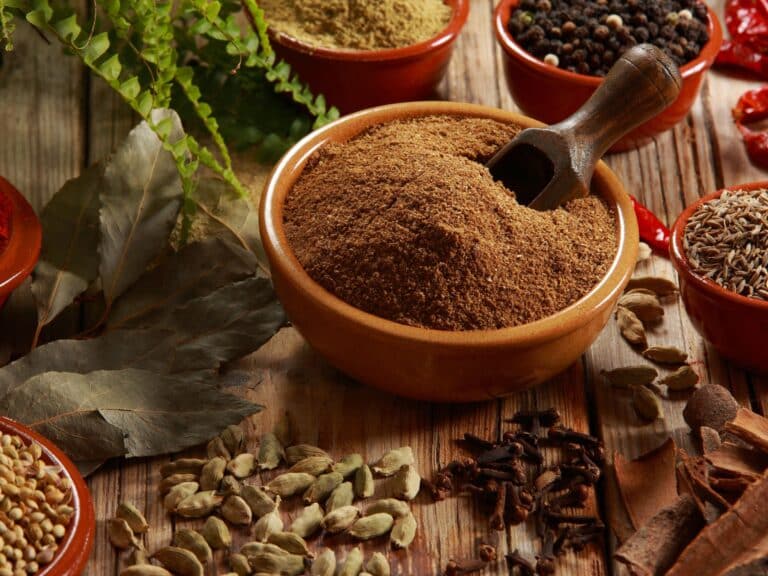
If you’ve ever savored a South Indian meal, you know that no dosa or idli is truly complete without a bowl of creamy, refreshing coconut chutney. This versatile, plant-based condiment is a staple across South India, celebrated for its ability to elevate any dish with its rich flavor and unique blend of spices. But what’s even more exciting? Coconut chutney isn’t just a flavor booster—it’s packed with health benefits, making it a perfect addition to any plant-based diet, no matter where you are in the world.
Let’s dive into how you can make a traditional South Indian coconut chutney, explore why it’s a nutritional powerhouse, and discover how this chutney can easily appeal to Western palates looking for bold, refreshing flavors.
The Role of Coconut Chutney in South Indian Cuisine
In South Indian homes, coconut chutney is served alongside breakfast staples like dosa, idli, and vada. Its creamy texture and cooling flavor provide the perfect counterbalance to the warm, crispy edges of dosa or the soft, fluffy texture of idli. While chutney recipes vary from region to region, coconut chutney remains a cornerstone of the South Indian dining experience.
This chutney is typically made by blending grated coconut with green chilies, roasted lentils, and a tempering of mustard seeds and curry leaves, resulting in a refreshing condiment that complements the bold flavors of South Indian dishes.
Health Benefits of Coconut Chutney
Coconut chutney isn’t just delicious—it’s packed with nutrients that make it a healthy addition to any meal. Here are some of the benefits that make this plant-based chutney shine:
- Rich in Healthy Fats: Coconut is an excellent source of medium-chain triglycerides (MCTs), which provide quick energy, improve brain function, and promote fat burning.
- High in Fiber: Coconut helps promote healthy digestion and gut health, making it a great accompaniment to meals rich in carbohydrates.
- Antioxidant Powerhouse: Ingredients like curry leaves, green chilies, and mustard seeds are loaded with antioxidants that help fight inflammation and protect the body from oxidative stress.
- Naturally Cooling: The cooling properties of coconut make this chutney ideal for balancing spicy dishes, especially during the hot summer months.
Traditional Coconut Chutney Recipe
Ready to make your own traditional coconut chutney? This simple recipe is plant-based, gluten-free, and packed with flavor. Whether you’re pairing it with South Indian classics or using it as a dip for veggies, this chutney is sure to become a favorite in your kitchen.
Ingredients:
- 1 cup freshly grated coconut (or frozen, thawed)
- 2 tablespoons roasted chana dal (Bengal gram)
- 1-2 Thai green chilies (adjust for spice preference)
- 1/2 inch piece of ginger, peeled
- 1/4 cup water (or as needed for consistency)
- Salt to taste
- A small bunch of fresh coriander leaves (optional)
For Tempering:
- 1 teaspoon coconut oil (or neutral oil of choice)
- 1/2 teaspoon mustard seeds
- 1 dried red chili
- 5-6 fresh curry leaves
- A pinch of asafoetida (optional)
Directions:
- Blend the Chutney: In a blender, combine the grated coconut, roasted chana dal, green chilies, ginger, and salt. Add water as needed and blend until you get a smooth, creamy consistency. You can also add a handful of fresh coriander leaves for extra flavor and freshness. Transfer to a bowl.
- Prepare the Tempering: In a small pan, heat the coconut oil over medium heat. Add mustard seeds and let them splutter. Next, add the dried red chili, curry leaves, and a pinch of asafoetida. Fry for a few seconds until the curry leaves are crisp and fragrant.
- Combine: Pour the tempering over the blended chutney and mix well.
- Serve: Serve this coconut chutney alongside dosa, idli, vada, or even as a dip with crackers or raw veggies. It can also be used as a spread on sandwiches or wraps for a refreshing twist!
A Refreshing Salad Dressing
Looking for a fun, modern way to use coconut chutney in plant-based meals? This chutney works wonderfully as a salad dressing for a vibrant, cooling green salad that’s perfect for warm weather or light lunches. Its creamy texture and refreshing flavor balance well with crisp greens and fresh veggies, adding an exciting Indian-inspired twist to your salad bowl.
Coconut Chutney Salad Dressing
Simply thin your coconut chutney with a little water and lime juice to create a smooth, pourable dressing. Here’s how you can use it:
Ingredients for the Salad:
- Mixed greens (arugula, spinach, or kale)
- Sliced cucumbers
- Cherry tomatoes, halved
- Shredded carrots
- Avocado slices
- Toasted sunflower seeds or pumpkin seeds
- Fresh cilantro leaves
Directions for the Dressing:
- Thin the Chutney: Take 2-3 tablespoons of your coconut chutney and whisk in 1-2 tablespoons of water and a squeeze of lime juice until you reach your desired dressing consistency.
- Assemble the Salad: In a large salad bowl, toss the mixed greens, cucumbers, tomatoes, shredded carrots, avocado, and cilantro together.
- Dress the Salad: Drizzle the thinned coconut chutney dressing over the salad. Sprinkle toasted sunflower or pumpkin seeds on top for added crunch.
- Enjoy: Serve this refreshing salad as a light meal or as a side dish to your favorite entrée.
Tantalize Your Palates
This salad is the perfect way to incorporate the refreshing, flavorful coconut chutney into a plant-based meal. The creamy, tangy dressing complements the crisp, fresh vegetables, while the added crunch from seeds makes the dish feel satisfying and balanced. Coconut chutney’s versatility shines through, elevating an everyday salad with its bold, vibrant flavors.
Creative and Delicious Ways to Enjoy Coconut Chutney Beyond Indian Dishes
1. Gourmet Sandwich Spread
Use coconut chutney as a flavorful spread for sandwiches or wraps. Its creamy texture and vibrant flavor pair well with grilled vegetables, avocado, and even cheese. Try it in:
- A roasted veggie and hummus wrap.
- A turkey and arugula sandwich for a fusion twist.
2. Dip for Snacks
Turn coconut chutney into a go-to dip for your favorite snacks:
- Serve it with pita chips, tortilla chips, or flatbreads.
- Use it as a dip for crudités like carrots, celery, and bell peppers.
- Pair it with sweet potato fries or baked potato wedges for a flavorful contrast.
3. Salad Dressing or Drizzle
Thin the chutney with a bit of lime juice, water, or olive oil, and turn it into a salad dressing. It works beautifully with:
- A leafy green salad with cucumbers, cherry tomatoes, and roasted chickpeas.
- A grain bowl with quinoa, roasted vegetables, and toasted seeds.
4. Topping for Buddha Bowls
Add a dollop of coconut chutney to Buddha bowls for a creamy, zesty element. It pairs well with ingredients like:
- Brown rice or quinoa.
- Roasted sweet potatoes, steamed broccoli, and sautéed kale.
- Protein options like tofu, tempeh, or grilled halloumi.
5. Sauce for Grilled or Roasted Dishes
Use coconut chutney as a sauce or condiment to accompany:
- Grilled tofu or tempeh steaks.
- Roasted cauliflower, eggplant, or zucchini.
- Grilled corn on the cob, brushed with the chutney for added flavor.
6. Fusion Breakfast or Brunch
Incorporate coconut chutney into your breakfast routine:
- Drizzle it over avocado toast for a fresh, spicy twist.
- Use it as a dip for savory pancakes or waffles.
- Pair it with scrambled eggs, frittatas, or an omelet for a creamy, herby side.
7. Pasta or Noodle Sauce
Mix coconut chutney into pasta or noodle dishes for a unique flavor. It works particularly well with:
- Cold soba noodles with veggies and sesame seeds.
- Zucchini noodles or spiralized veggies for a low-carb option.
- A creamy alternative to pesto for spaghetti or penne.
8. Pizza or Flatbread Topping
Use coconut chutney as a base sauce for pizzas or flatbreads:
- Spread it over naan or flatbread and top with veggies, cheese, and herbs.
- Use it as a drizzle for a Mediterranean-style pizza with olives, feta, and spinach.
9. Burger or Taco Condiment
Swap out traditional condiments for coconut chutney:
- Use it as a topping for veggie burgers, black bean patties, or falafel wraps.
- Pair it with tacos filled with grilled veggies, paneer, or tofu.
10. Alternative to Sour Cream or Yogurt
Replace sour cream or yogurt with coconut chutney for a dairy-free, flavor-packed option. Use it in:
- Loaded baked potatoes with sautéed greens and lentils.
- Chili or soups as a creamy garnish.
Bringing the Flavors of South India to Your Kitchen
Coconut chutney is a true embodiment of how simple ingredients can come together to create something extraordinary. Whether you’re using it as an accompaniment to South Indian classics or experimenting with it in your own dishes, this chutney offers a refreshing, nutritious addition to any meal. Plus, its rich, plant-based profile makes it a fantastic option for those looking to eat clean and flavorfully.
So grab some fresh coconut and spices, and get ready to bring the magic of South Indian coconut chutney into your kitchen. Your taste buds—and your body—will thank you!






